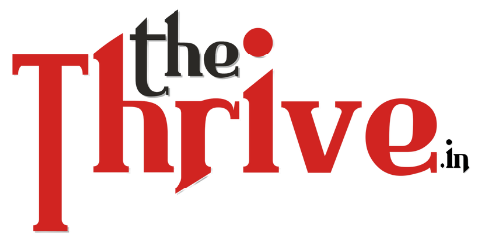Positions in the company or corporate titles are given to those who have a certain level of responsibility for a company's success and profitability. They are the individuals who must strategize, plan and collaborate to keep a company or working for an organization operating efficiently.
Every organization exists and operates within a particular context. These contexts define the boundaries of how things function in organizations and shape the ways people behave in them. Every person or group in the organization plays a role and contributes meaningfully to its success.
People who assume responsibility for various functions of the organization, whether managerial or non-managerial, play central roles in shaping the organizational environment and subsequently influence the way people behave.
While some positions are clearly more challenging than others, there are a host of challenges faced by every employee throughout their career. Having a particular position in the company and responsibilities likely vary depending on each company and their needs. And they are the core of the workplace.
The position in the company is key to attracting talent and often represents an employee's seniority on the team. In most cases, a position in a company will also let you know what department an employee works in.
Before joining a company, you should assess your skills, interests, motivations, and goals. Once you determine what kind of position will suit you best, you can apply for it and prepare yourself for success.
Position in a Company
A position in a company is simply a job title you take on as well as the necessary duties under it. When you fill a position in a company, you perform all the tasks the employer assigned to you in the initial job description.
There are many different levels, positions and types of employment, but all classes help assist with the day-to-day operations of a company. Within any successful organization, there are various job positions that have authority over others since higher-level positions manage entire teams.
There are three primary types of positions in a company: executives, management, and operational. Here is the guide to positions in a company and their responsibilities.
1. Director of Operations:
A director of operations is responsible for the profitability and growth of an organization. They collaborate with various departments to improve the functionality and processes of doing business for each department.
The role may also work with project managers for specific programs they need to develop budgets. Some companies have a chief operating officer (COO) and directors of operations positions. A director of operations will report to the chief operating officer in a company that has both positions.
Responsibilities of the Director of the operation:
Review, analyze and evaluate business procedures.
Implements policies that will improve day-to-day operations.
Ensures work environments are productive and safe.
Manage manufacturing, purchasing, and sales departments, ensuring each is reaching goals set by departmental and company leadership.
Planning, controls, implements, monitors, and forecasts budgets and costs of sales in each division to achieve financial objectives.
Oversees the Hiring and training of departmental managers.
Organizes and schedules departmental managers.
2. Vice President :
Corporate vice presidents are the second or sometimes come in third in command in a company, depending on the company's specific structure. They may also have a specific area of expertise that they apply to their roles and responsibilities. This title is similar to or the same as chief of marketing or chief marketing officer.
Some organizations have one vice president or multiple vice presidents depending on the size of their organization or the industry. Other vice presidents work in middle management and deal more directly with supervisors of middle management.
Responsibilities of Vice president :
Look after daily activity and productivity
Maintaining the company’s image
Overall budgets and goals for the director and managers in the firm
Working with the CEO and board of directors to uphold the company’s policies, strategies, planning and goals
Constantly keep reviewing the company strategy and innovations
3. Chief Executive Officer:
The CEO has authority over all other employees in an organization. All other C-suite executives and their teams report back to the CEO. Sometimes, the chief executive officer is a member of the board of directors, an elected body of stakeholders that own large portions of stock in a given company or the sole business owner.
Responsibilities of Chief executives officer:
Manages and directs the company's primary goals and objectives.
Look after employment decisions at the executive level of the company.
Leads a team of executives to consider major decisions: acquisitions, mergers, joint ventures, or large-scale expansion.
Works with the board of directors and other executives to establish short-term and long-range goals & objectives, and related plans and policies.
Oversees the organization's financial structure, ensuring adequate and sound funding for the company's mission and goals.
4. Chief Financial Officer:
The CFO's responsibility is to deal with all the financial goals of a company and report to the CEO. It takes years of experience in accounting, management, and plenty of relevant education to obtain a senior management position as a chief financial officer.
Responsibilities of Chief financial officer:
Manage the company’s financial planning
Perform risk management by analysing the company’s liabilities and investments
Decide on investment strategies and risks
Control and the organisation’s fundraising plans and capital structure
Ensure cash flow is appropriate for the organisation’s operations
Supervise all finance matters in the company
Prepare reliable current and forecasting finance reports
5. Chief Information Officer:
The CIO oversees all the IT–related information technology for a company. As a senior vice president or chief officer at a company, the CIO reports directly to the CEO or the president while managing a team of IT managers and specialists.
Responsibilities of Chief information officer:
Creating business value and goals through technology
Manage the development of customer service platforms
Approving IT architecture
Establishing IT policies, strategies, and standards
Developing and approving the latest technology
6. Chief Marketing Officer:
The responsibility of the CMO is to make decisions for the marketing department. Under the leadership of the chief marketing officer, various marketing specialists and managers implement social media strategies, digital marketing campaigns, etc.
Responsibilities of Chief Marketing officer:
Oversee a company's advertising and sales strategy.
Drive revenue by increasing sales through marketing strategy.
Develop the structure of the marketing department.
Approve and create marketing campaign ideas.
7. Chief Operations Officer:
The COO's responsibility is to operate at a company as a senior manager. As the daily operations manager, they work with middle managers as well as fellow C-suite employees to ensure day-to-day processes operate at maximum efficiency in the firm.
Responsibilities of Chief operation officer:
Implementing business operations.
Create policies that promote company culture and vision.
Implement business strategies, plans and procedures.
Set comprehensive goals for the performance and growth of the company.
Create policies that promote culture and vision.
Oversee daily operations of the company and the work of executives.
Submit reports to the CEO on all matters of importance.
8. Human Resources Manager:
Some companies might have a chief human resources officer (CHRO), while others will likely have an HR manager report to the COO. HR managers ensure every employee receives training and onboarding and has an avenue to raise concerns about their work environment basically overseeing the employees. Those in human resource management might also oversee recruiters.
Responsibilities of Human resources manager:
Recruits, interviews, hires and trains new staff in the company
Manage the daily workflow of the department.
Provides constructive and timely performance.
Manage discipline and termination of employees in accordance with company policy.
9. Information Technology Manager:
An IT manager likely reports to the CIO or CTO. One IT manager might oversee cybersecurity, while another might specifically run internal networks for the business.
Responsibilities of Information technology manager:
Organizing events to increase staff motivation and engagement in the workplace.
Analyzing data to calculate the cost-benefit ratio
Concern problems in the company’s supply chain through quality control checks
Create programmes for employees’ professional development.
10. Marketing Manager:
Marketing managers run individual marketing departments and supervise a dedicated public relations marketing team, whereas another marketing manager might look after a team of SEO-specific marketing specialists.
Responsibilities of Marketing manager
Strategy development and planning of campaigns that can promote and generate traffic.
Implementation of the marketing campaigns.
Creating engaging and informative content for the website, social media, and any other content marketing channels.
Building sustainable relationships and partnerships.
11. Product Manager:
A product manager’s responsibility is to oversee the development and improvement of products within businesses, whether that creates goods, services, or both.
Responsibilities of a Product manager
Understanding and representing customers' needs.
Monitoring the market and competitive analyses.
Design a vision for a product.
Prioritizing product features.
12. Sales Manager:
The sales manager ensures sales representatives meet their quotas, improve their sales-related work, and operate as ideal company ambassadors. A sales manager also keeps updated with strategic planning for broader, long–term sales goals.
Responsibilities of a Sales manager:
Meeting the sales targets of the company through effective planning and budgeting.
Sets the targets for the sales executives and other sales representatives.
A sales manager must ensure the targets are realistic and achievable.
Understand who can perform a particular task in the most effective way.
13. Administrative Assistant:
Administrative assistants or you can say, executive assistants organize and plan the schedules of managerial or executive-level employees. They might just report to their immediate supervisors or to a chief administrative officer as well.
Responsibilities of an Administrative assistant:
Organize and schedule appointments for leaders.
Plan meetings and write minutes.
Write and distribute emails, memos, letters, and forms.
Create regularly scheduled reports.
Update and maintain office policies.
14. Bookkeeper:
Businesses need people to keep track of their financial status. That's where a bookkeeper role comes in. These accounting professionals can eventually enter the ranks of management to become CFOs. The CFO (Chief Financial Officer) is the person responsible for managing the company's financial operations and strategy.
Responsibilities of Bookkeeper:
Establishing different accounts for the company.
Maintaining records of financial transactions.
Defining bookkeeping policies.
Developing systems to account for financial transactions
Maintaining subsidiary accounts
15. Business Analyst:
Internal analysis to see how they can improve business. Business analysts work with COOs (Chief Operating Officers) and the departments under their supervision to encourage business development on all fronts.
Responsibilities of the Business analyst:
Analyzing and evaluating the current business processes and identifying areas of improvement
Researching and reviewing business processes
Training and coaching staff members in departments.
Developing and monitoring project performance
Working with senior management, partners, clients and technicians
16. Sales Representative:
The Sales Representative is responsible for selling products and meeting customer needs to complete the potential sales outlets. They ensure that the customer is satisfied while making a purchase.
Responsibilities of the sales representative:
Review a company’s target market and identify avenues to generate new leads.
Creating a strategy for leads and reaching out to new clients using various channels.
Negotiating prices and closing deals with clients.
Participating in company meetings with sales leads to keep up with changes in the sales team infrastructure and updated quotas.
17. Software Engineer:
Software engineers are programmers who design new software for companies, improve existing programs and provide quality assurance for any upcoming initiatives developed in code. Software engineers can climb the ranks to become CTO (Chief Technology Officers).
Responsibilities of the software engineers:
Execute full software development.
Develop flowcharts, layouts and documentation to identify requirements and solutions for the company.
Write well-designed code for the website.
Develop software verification plans.
Maintain software functionality
Summary
Positions in the company or Corporate titles are given to corporate officers to show what duties and responsibilities they have in the firm. Such titles are used by publicly and privately held for-profit corporations, cooperatives, non-profit organizations, educational institutions, partnerships, and sole proprietorships also considered corporate titles and in this article, we have covered 17 positions in a company.
FAQ's:
A workplace or job position is a function you do at a company. It includes daily tasks and projects. Every employee has a job position that includes specific duties and responsibilities that help the company reach its goals & objectives.
The four different job experience levels
- Entry-level.
- Intermediate.
- Mid-level.
- Senior or executive-level.
Job structure, job catalogue, or leveling refers to an organisation's infrastructure or hierarchy of jobs.





